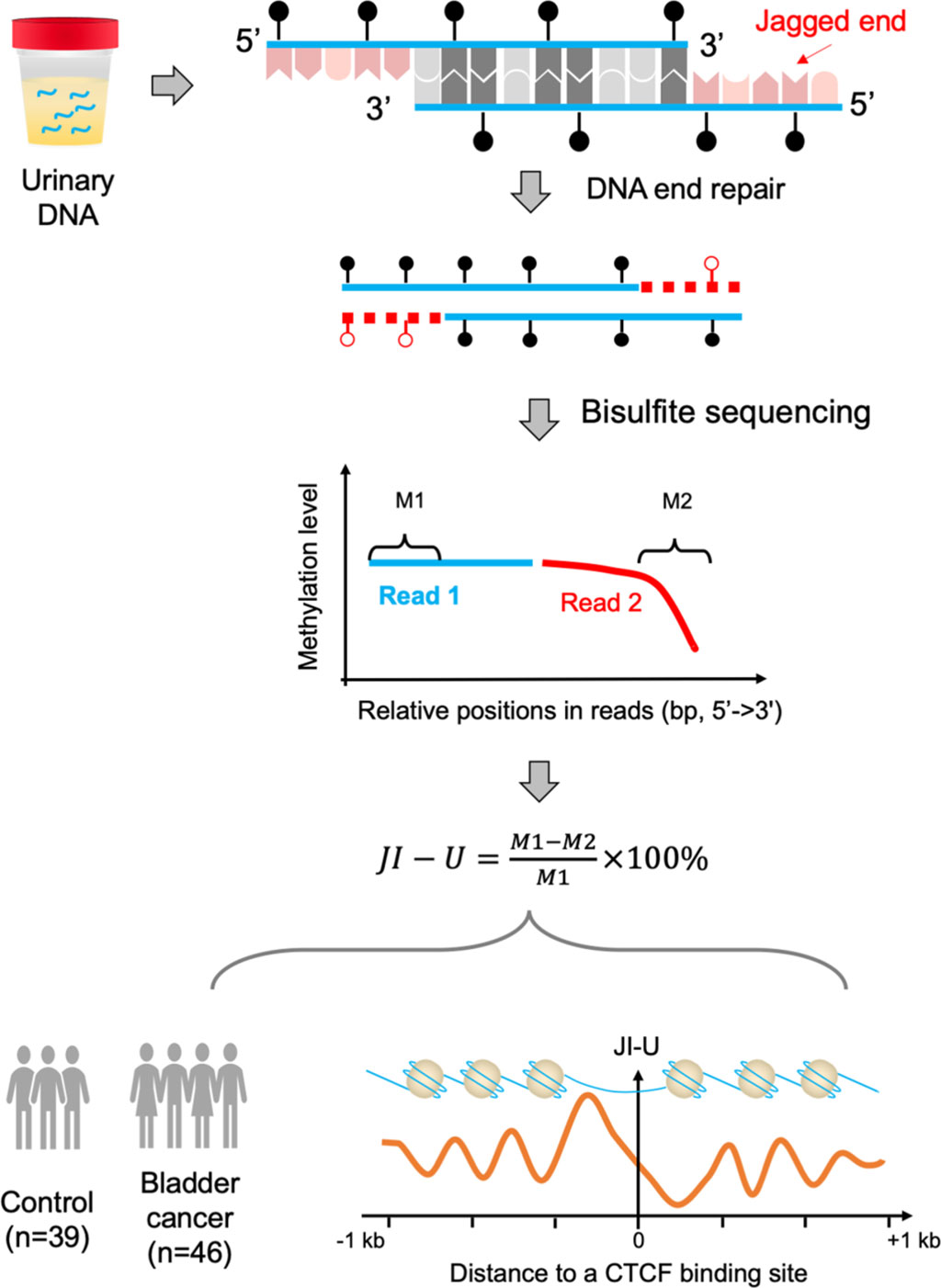Jagged Ends of Urinary Cell-Free DNA Assessed in Bladder Cancer Detection
By LabMedica International staff writers
Posted on 24 May 2021
Bladder cancer is where a growth of abnormal tissue, known as a tumor, develops in the bladder lining. In some cases, the tumor spreads into the bladder muscle. The most common symptom of bladder cancer is blood in the urine, which is usually painless.Posted on 24 May 2021
Cell-free DNA (cfDNA) molecules in plasma consist of fragments of DNA. Much interest has been focused recently on the fragmentation patterns of such DNA molecules. The fragment sizes and ends, for example, display nucleosomal features in relation to the tissues of origin. When compared with plasma DNA, urinary cfDNA molecules exhibit a different size profile; therefore, urinary DNA molecules are much more fragmented than plasma DNA.

Image: Schematic of workflow for urinary DNA jagged end analysis. Urinary DNA was subjected to an end-repair process; JI-U = jagged index–unmethylated (Photo courtesy of The Chinese University of Hong Kong)
Medical Scientists at The Chinese University of Hong Kong (Shatin, Hong Kong, China) and their colleagues obtained bisulfite sequencing data of urinary DNA from a previous study, including 46 patients with bladder cancer, all of whom were urothelial cell carcinoma, and 39 control participants with hematuria, but without detectable bladder cancer. Among patients with bladder cancer, 37 had non–muscle-invasive bladder cancer and nine patients with muscle-invasive bladder cancer.
Urinary cfDNA was extracted using the Wizard Plus Minipreps DNA Purification System (Promega, Madison, WI, USA) with the addition of guanidine thiocyanate to urine before mixing with resin. DNA libraries were sequenced using the Illumina HiSeq 2500 or NextSeq 500 with a 41 bp × 2 paired-end sequencing protocol (Illumina, San Diego, CA, USA). Incorporation of unmethylated cytosines during the repair of the jagged ends lowered the apparent methylation levels measured by bisulfite sequencing and were used to calculate a jagged end index. This approach is called jagged end analysis by sequencing.
The investigators reported that the jagged end index of urinary cfDNA was higher than that of plasma DNA. The jagged end index profile of plasma DNA displayed several strongly oscillating major peaks at intervals of approximately 165 bp (i.e., nucleosome size) and weakly oscillating minor peaks with periodicities of approximately 10 bp. In contrast, the urinary DNA jagged end index profile showed weakly oscillating major peaks, but strongly oscillating minor peaks. The jagged end index was generally higher in nucleosomal linker DNA regions. The 46 Patients with bladder cancer had lower jagged end indexed of urinary DNA than 39 participants without bladder cancer. The area under the curve for differentiating between patients with and without bladder cancer was 0.83.
The authors concluded that jagged ends represent a property of urinary cfDNA. The generation of jagged ends might be related to nucleosomal structures, with enrichment in linker DNA regions. Jagged ends of urinary DNA could potentially serve as a new biomarker for bladder cancer detection. The study was published in the April, 2021 issue of the journal Clinical Chemistry.
Related Links:
The Chinese University of Hong Kong
Promega
Illumina










 (3) (1).png)



